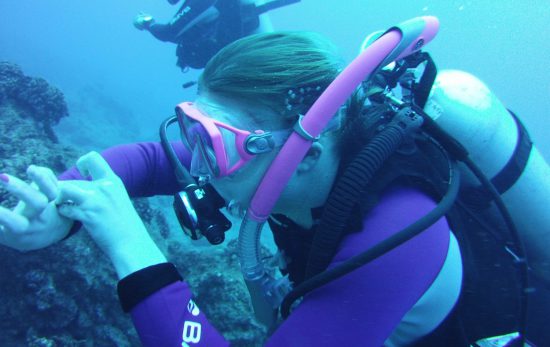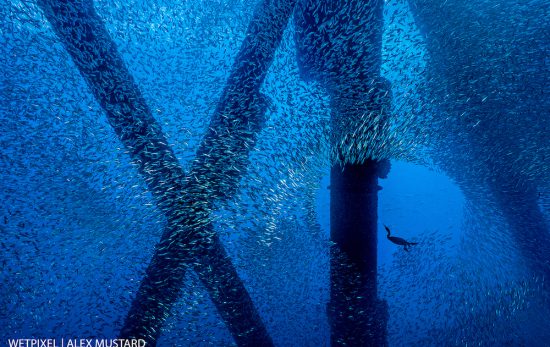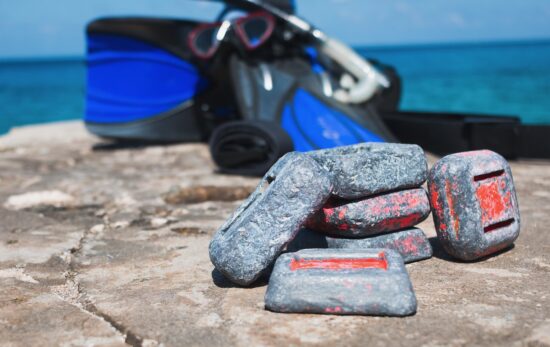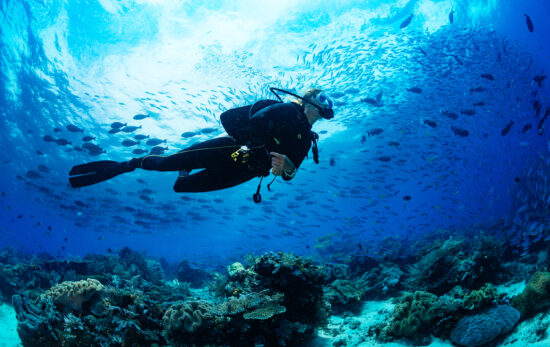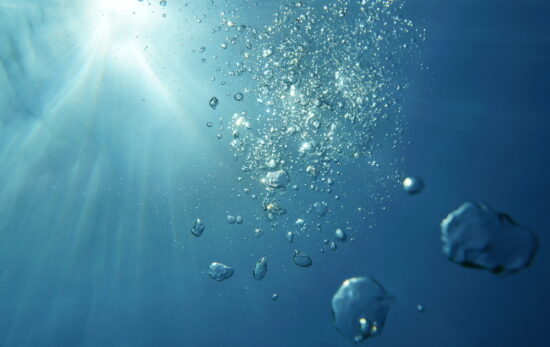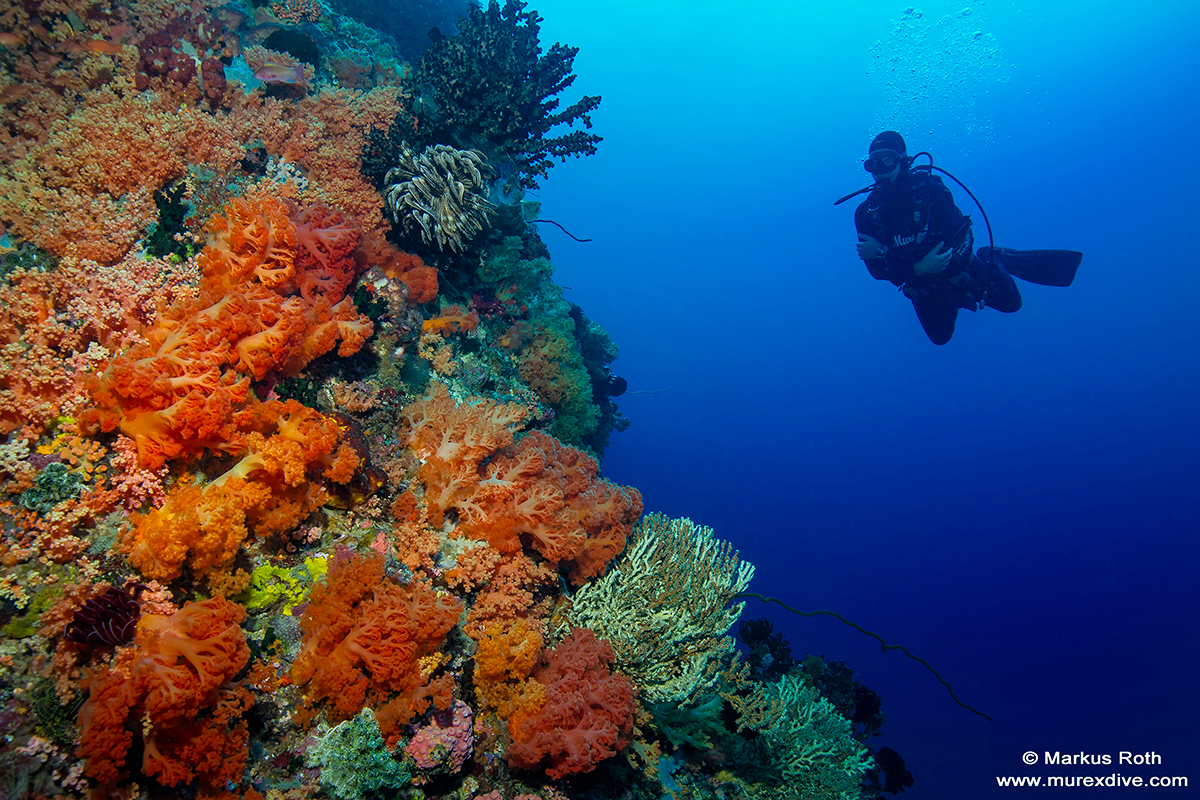 Photos supplied by Murex Dive
Photos supplied by Murex Dive
Not all dive sites have flat bottoms or sloping reefs; in some parts of the world the geology of the area is nowhere more apparent than underwater where submerged coral encrusted walls form part of (or all) of a dive site. Walls can vary in size. “Mini walls” may only be a few metres high and take up a small section of an otherwise sloping reef whereas some walls can stretch for kilometres horizontally and descend down for hundreds of meters.
Very rarely will you find two wall dive sites that are the same. Walls tend to be packed with crevices, ledges, overhangs, sea fans and different coral species. – all of which make them unique and exciting places to discover and explore!
For many divers wall diving can seem like a daunting experience but it doesn’t need to be! You just need to remember a few handy tips and techniques. When you have gained your confidence in wall diving you’ll be able to explore an array of new dive sites and environments, see different and often new marine life, develop your skills and become a more competent diver in the process!
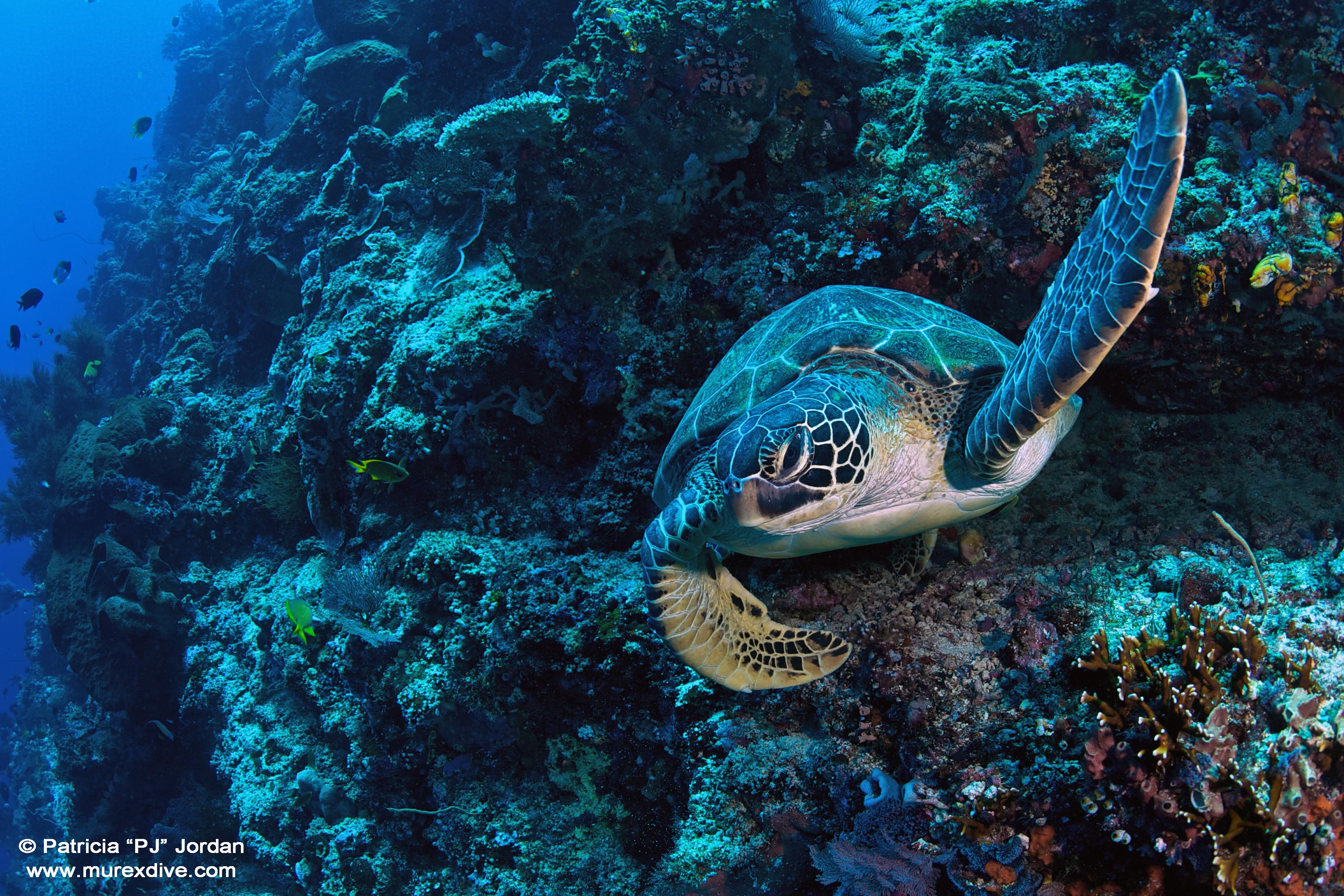
Here are some pointers to take into consideration when wall diving:
- Plan your dive with your buddy – confirm the maximum depth and remember that you don’t have a solid bottom to rely on so you need to monitor your depth gauge often and adjust your positioning accordingly.
- Plan your dive profile – if possible plan for a multilevel dive. Go down to the deepest depth first and then slowly make your way back up – multilevel diving works well for this. If you are travelling to a wall diving area ask your chosen operator if they offer the PADI Multilevel Diver Specialty. It’s a great course for divers who also want to learn more about the technicalities of dive planning, dive computers and tables.
- Buoyancy – This is a key factor which affects your comfort and safety. As you’ll be swimming mid-water you must have your buoyancy under control or it will control you. If you are slightly negatively buoyant you will start to “sink” and as you do so the air in your BCD and your wetsuit will compress, making you more negatively buoyant and causing you to sink faster. If you’re swimming along admiring the coral you may not realise this is happening. The solution is to check your gauges and check with your buddy often and stick to your plan. If your BCD is slightly over inflated the reverse effect can occur. Either way could lead to an uncontrolled ascent or descent. The PADI Peak Performance Buoyancy Specialty Course will teach you how to check that you are carrying the correct amount of weights, position your weights for trim, use your breathing to control your buoyancy and improve your air consumption. If you are planning to take your PADI Advanced Open Water Diver course during your trip the Peak Performance Buoyancy Adventure Dive is a valuable inclusion.
- Stay close to the wall – Generally speaking there will be less current in the area closest to the wall versus the open “blue” water. Stay as close as you can to the wall without being so close that you risk kicking or damaging it with your fins.
- Study the shape of the wall – Most walls do not have consistently flat surfaces. Curves, contours, ledges and overhangs can be used to shelter from any current, find hiding marine life and take amazing topographical photographs.
- Buddy contact and monitoring – This is extremely important so you don’t exceed your planned maximum depth. Check your gauges regularly and check that your buddy is close by and at the same depth. Remember that you should be a maximum of 2 seconds apart.
- Take your time – Walls provide habitat for a vast array of incredible marine species and critters so check in every nook and cranny, a small torch is very handy for this and when you peer into a crevice you might be surprised by what is looking back at you!
- Surface Support – Whether you are diving from shore or by boat make sure that you have some form of surface support which knows your planned dive time, intended direction of travel and planned exit point.
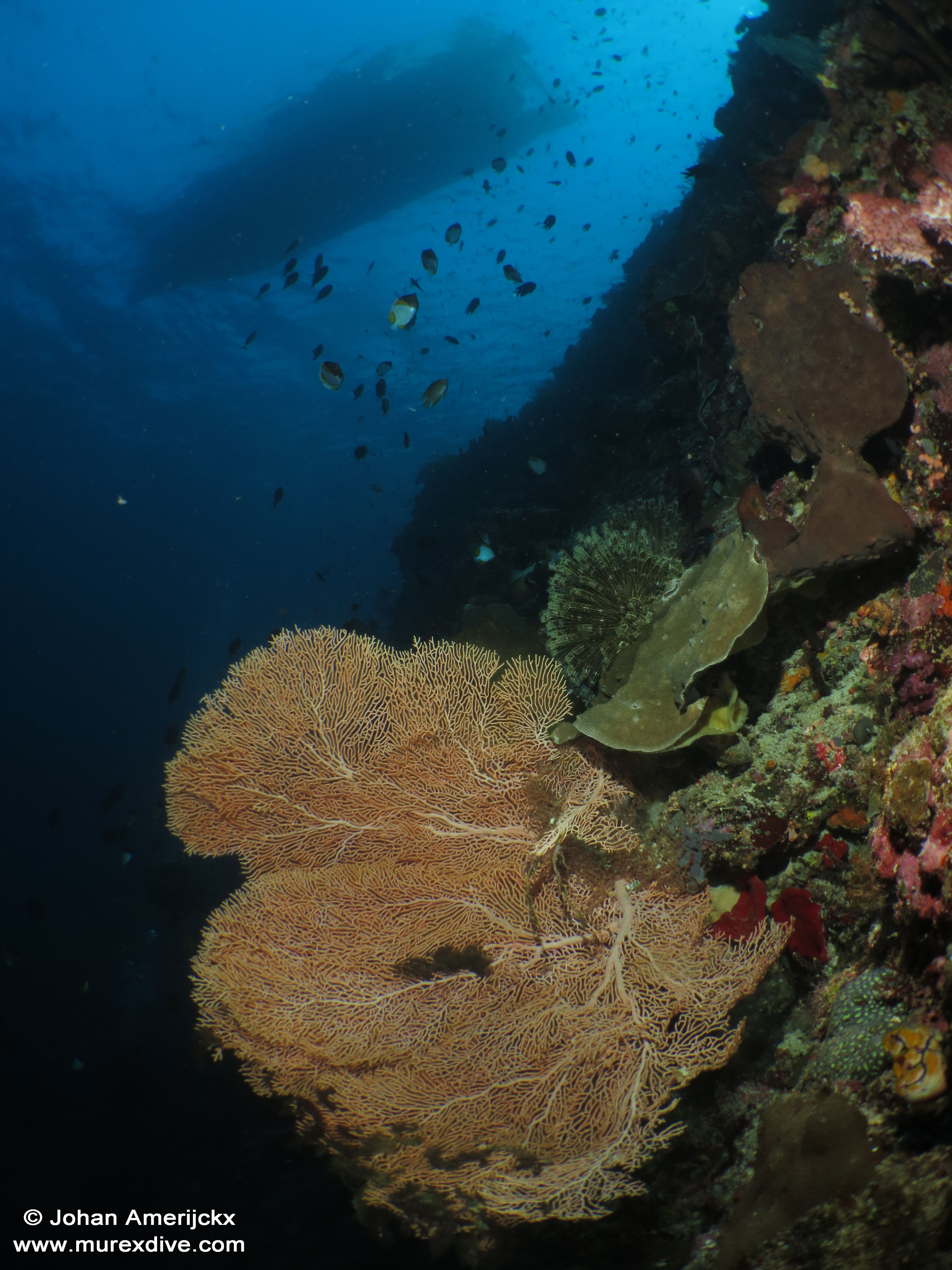
Once you start exploring walls you’ll see why some of them are often included in the world’s most famous dive site lists. World famous walls such as those in the Bunaken Marine Park in Indonesia are like underwater skyscrapers and it can be hard to see the small details as first as the initial wow factor is the colossal structure – don’t be deceived, walls are home to all creatures great and small!
To locate a PADI® store in your area and enquire about dive topographies or any of the PADI courses mentioned here, use our dive store locator.

